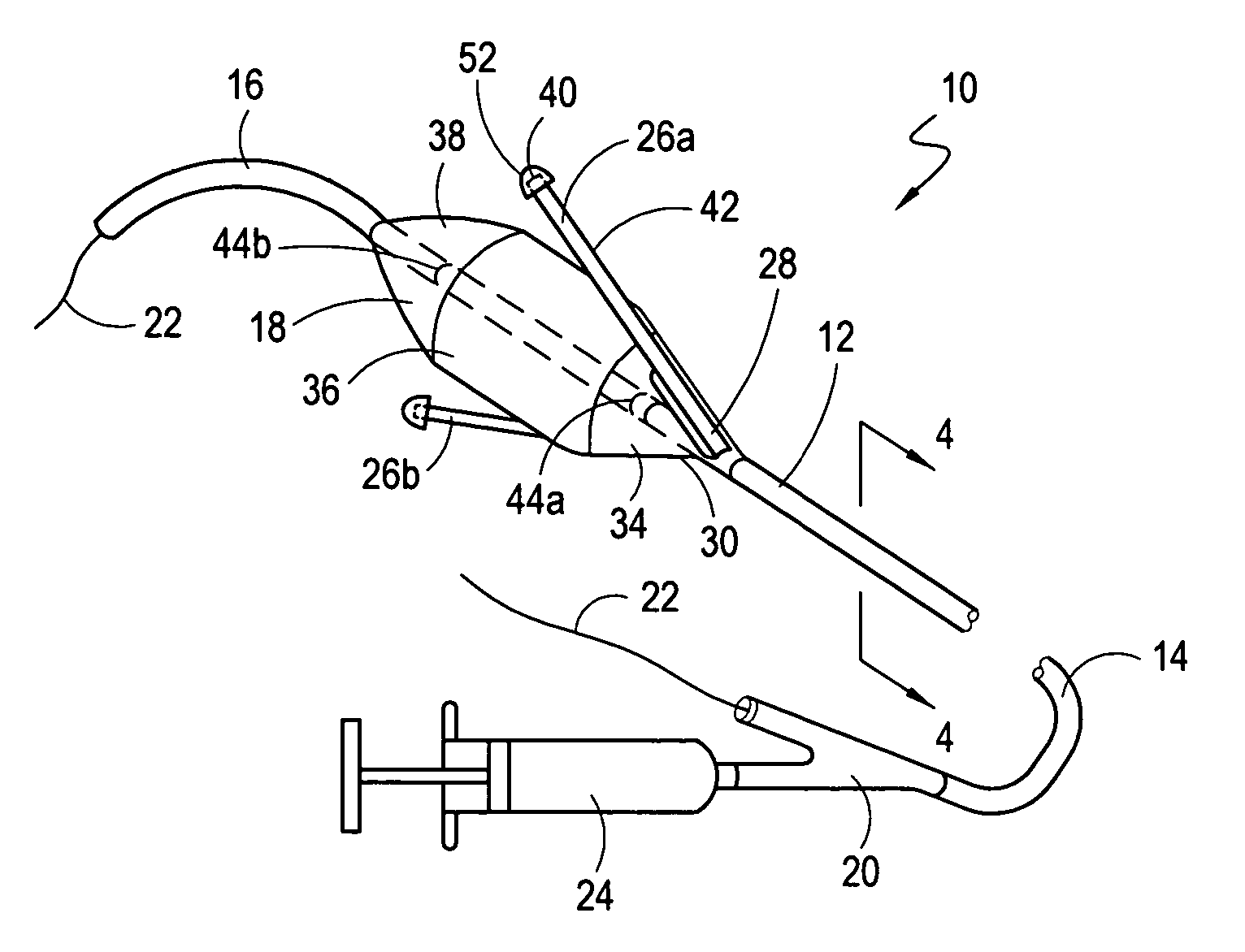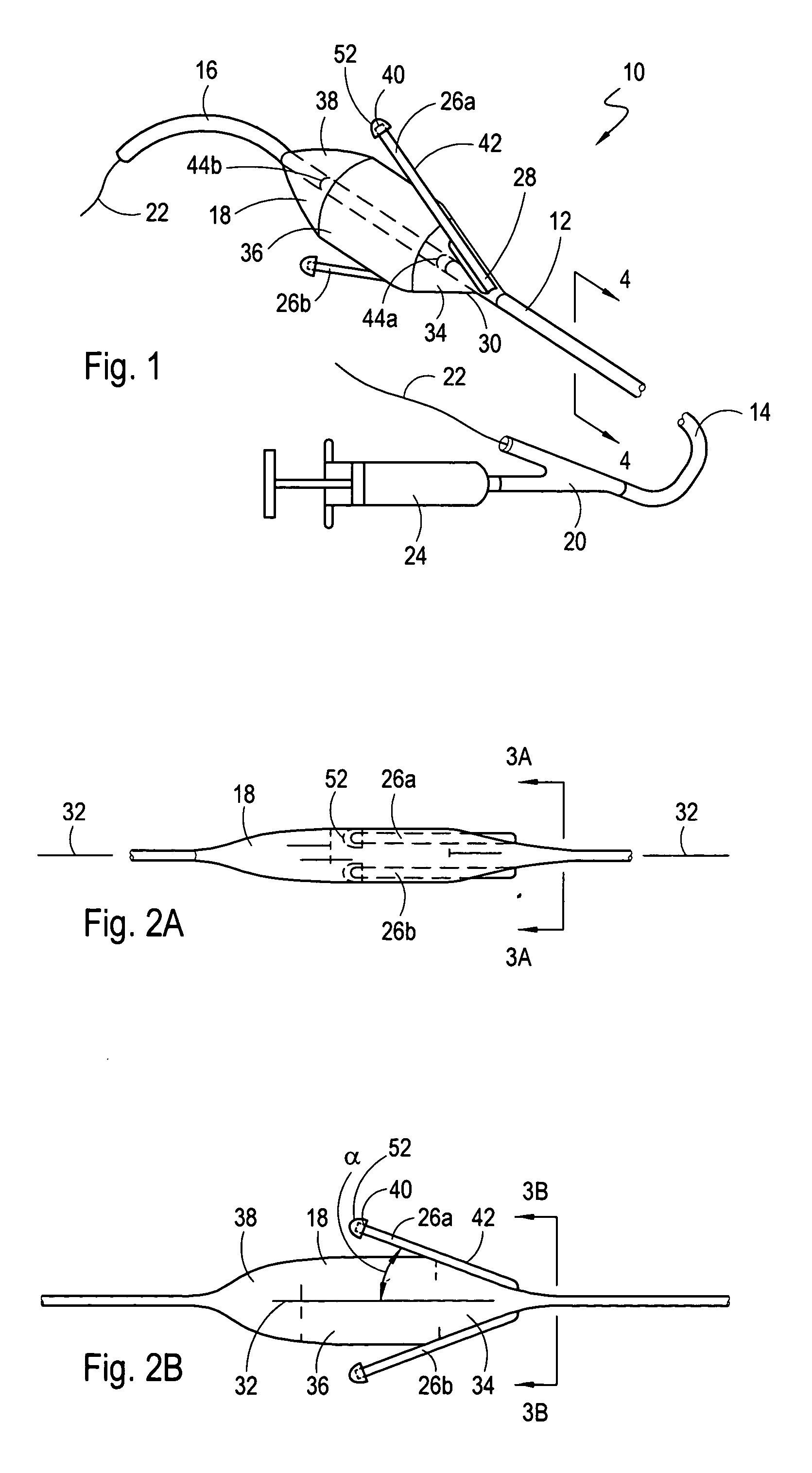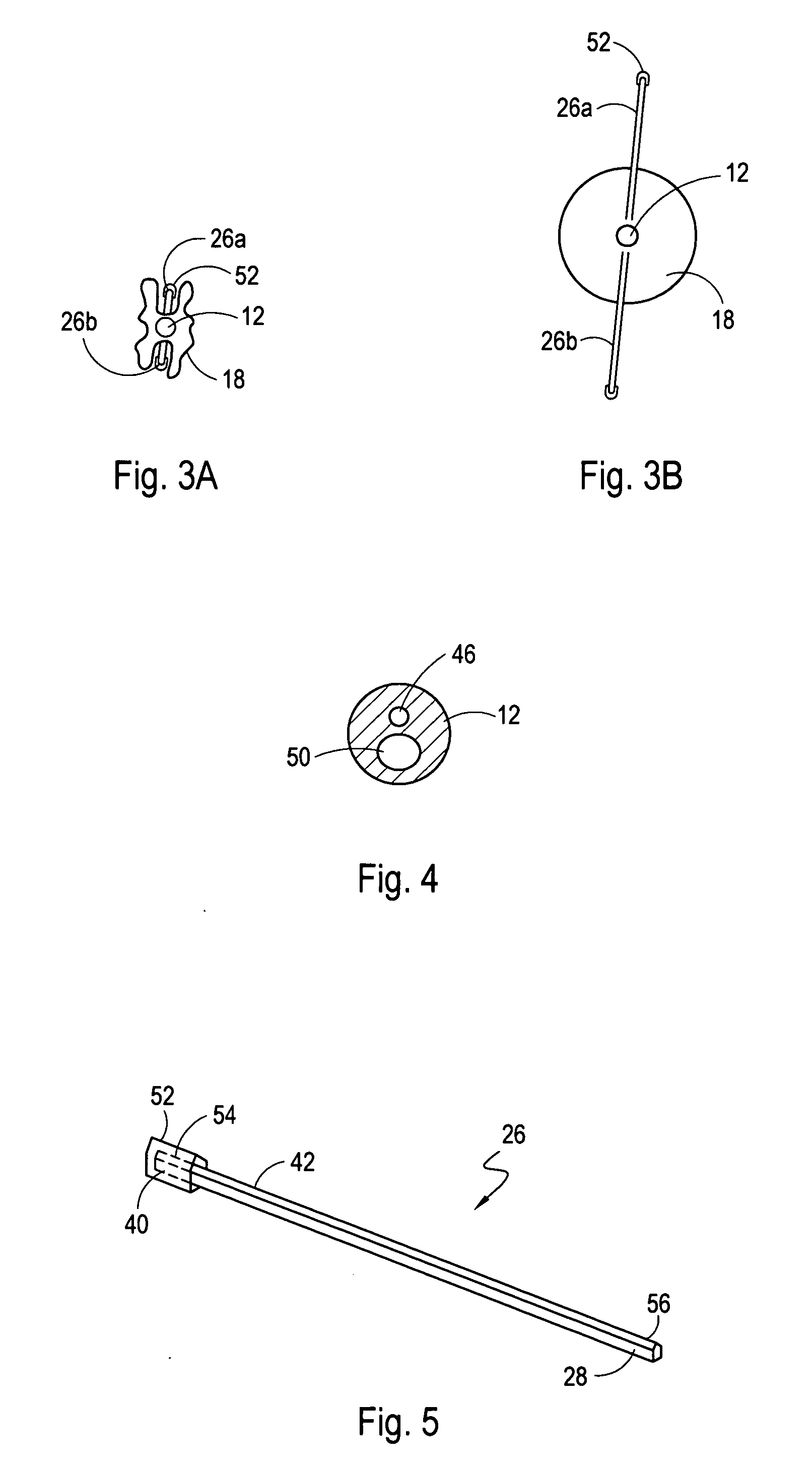Aortic stenosis cutting balloon blade
- Summary
- Abstract
- Description
- Claims
- Application Information
AI Technical Summary
Benefits of technology
Problems solved by technology
Method used
Image
Examples
Embodiment Construction
[0025] Referring initially to FIG. 1, a system for incising tissue in accordance with the present invention is shown and generally designated 10. As shown, the system 10 includes a catheter 12 which has a proximal end 14 and a distal end 16. System 10 also has an inflatable, elongated balloon 18 that is mounted on the catheter 12 near its distal end 16. Further, it is seen that a y-site 20 is attached to the proximal end 14 of the catheter 12. Specifically, the y-site 20 allows the catheter 12 to be operationally engaged with a guidewire 22 for the purpose of advancing the catheter 12 over the guidewire 22 after the guidewire 22 has been pre-positioned in the vasculature of a patient (not shown). FIG. 1 also shows that an inflation / deflation device 24 can be connected to the y-site 20 for fluid communication with the balloon 18.
[0026] For the catheter 12, the inflatable balloon 18 can be made of a compliant, semi-compliant or non-compliant material. Specifically, any suitable therm...
PUM
 Login to View More
Login to View More Abstract
Description
Claims
Application Information
 Login to View More
Login to View More - Generate Ideas
- Intellectual Property
- Life Sciences
- Materials
- Tech Scout
- Unparalleled Data Quality
- Higher Quality Content
- 60% Fewer Hallucinations
Browse by: Latest US Patents, China's latest patents, Technical Efficacy Thesaurus, Application Domain, Technology Topic, Popular Technical Reports.
© 2025 PatSnap. All rights reserved.Legal|Privacy policy|Modern Slavery Act Transparency Statement|Sitemap|About US| Contact US: help@patsnap.com



